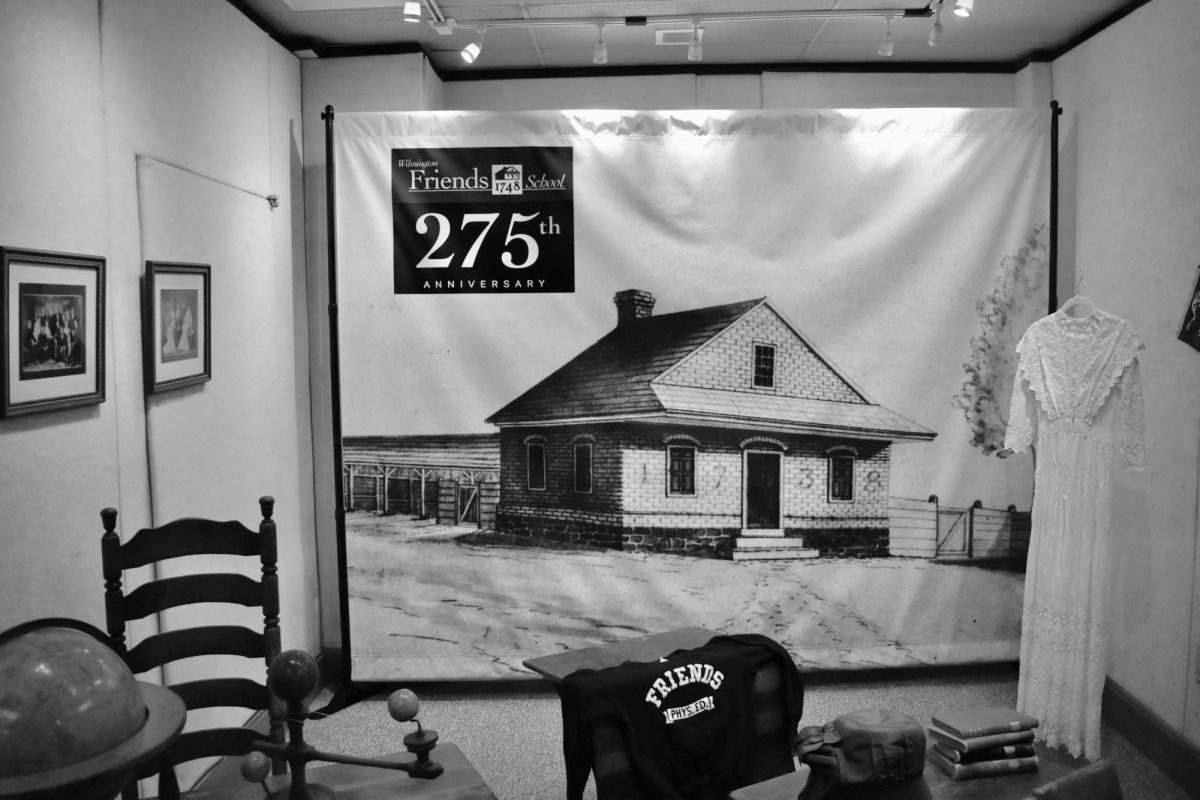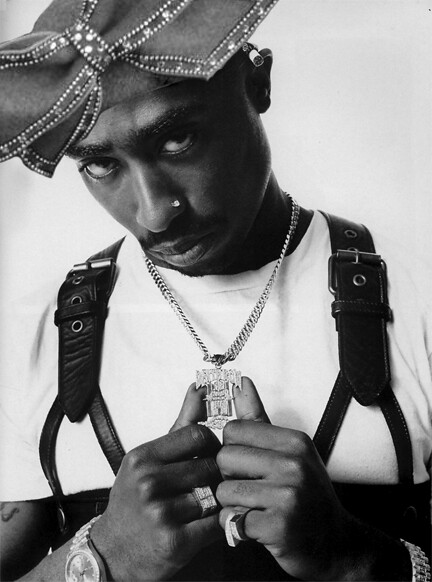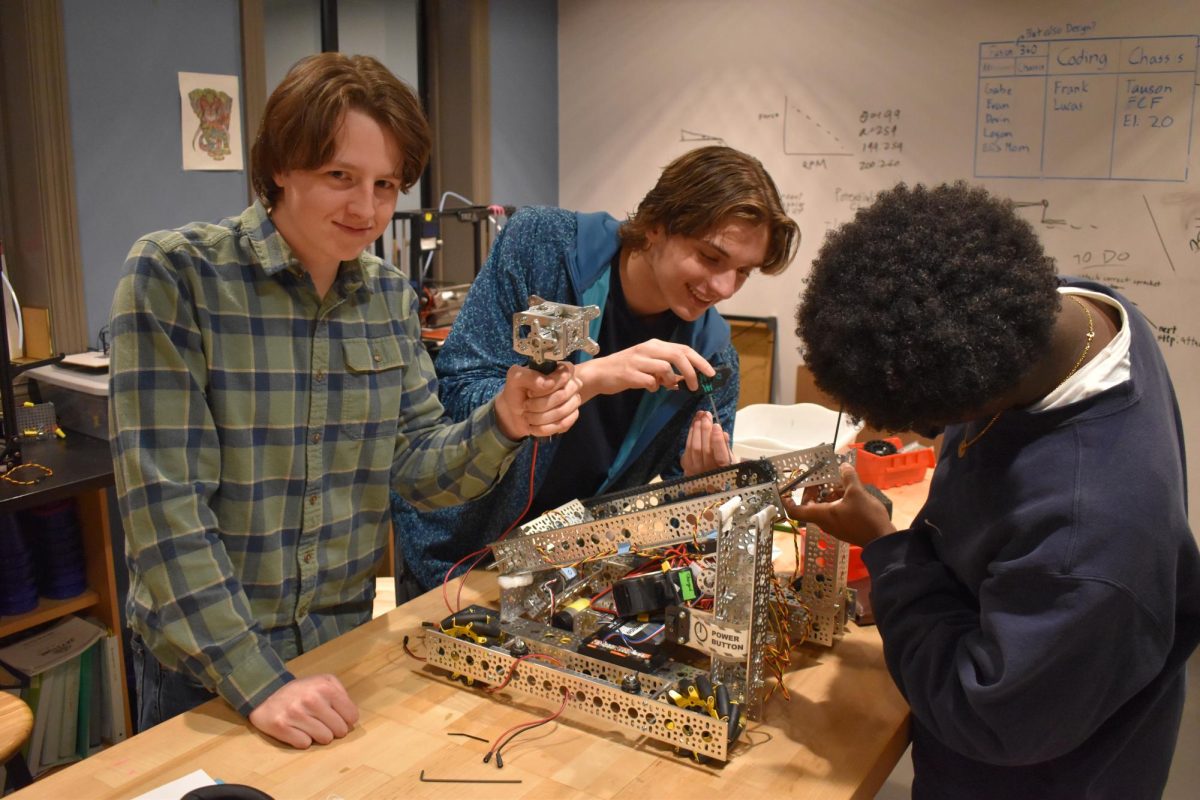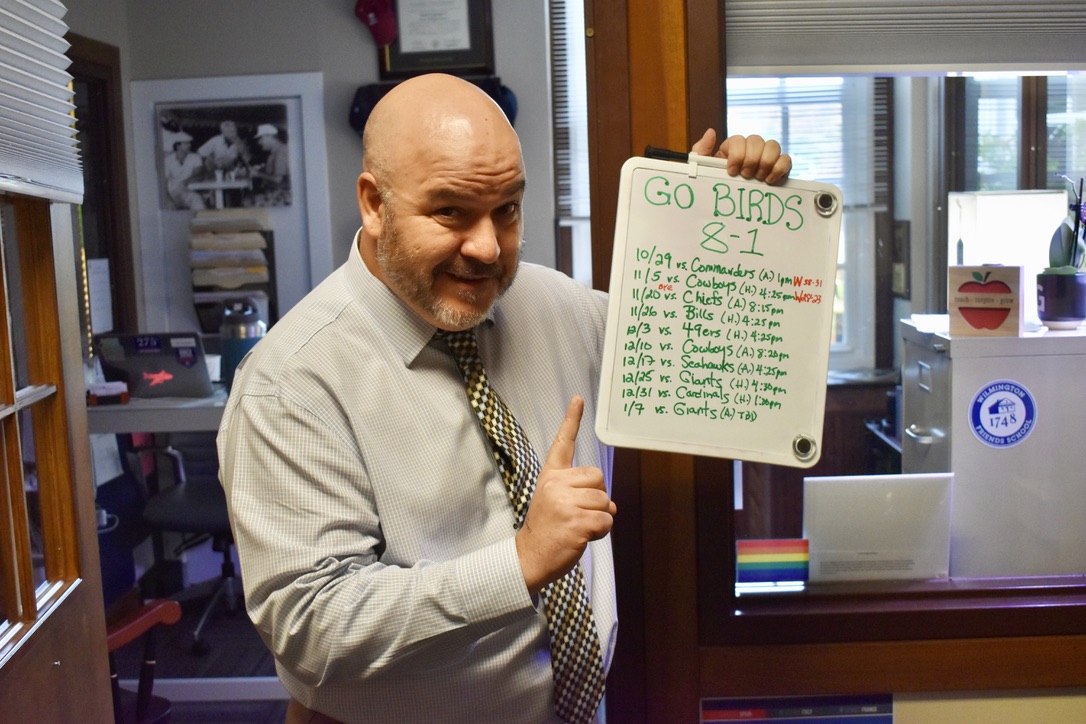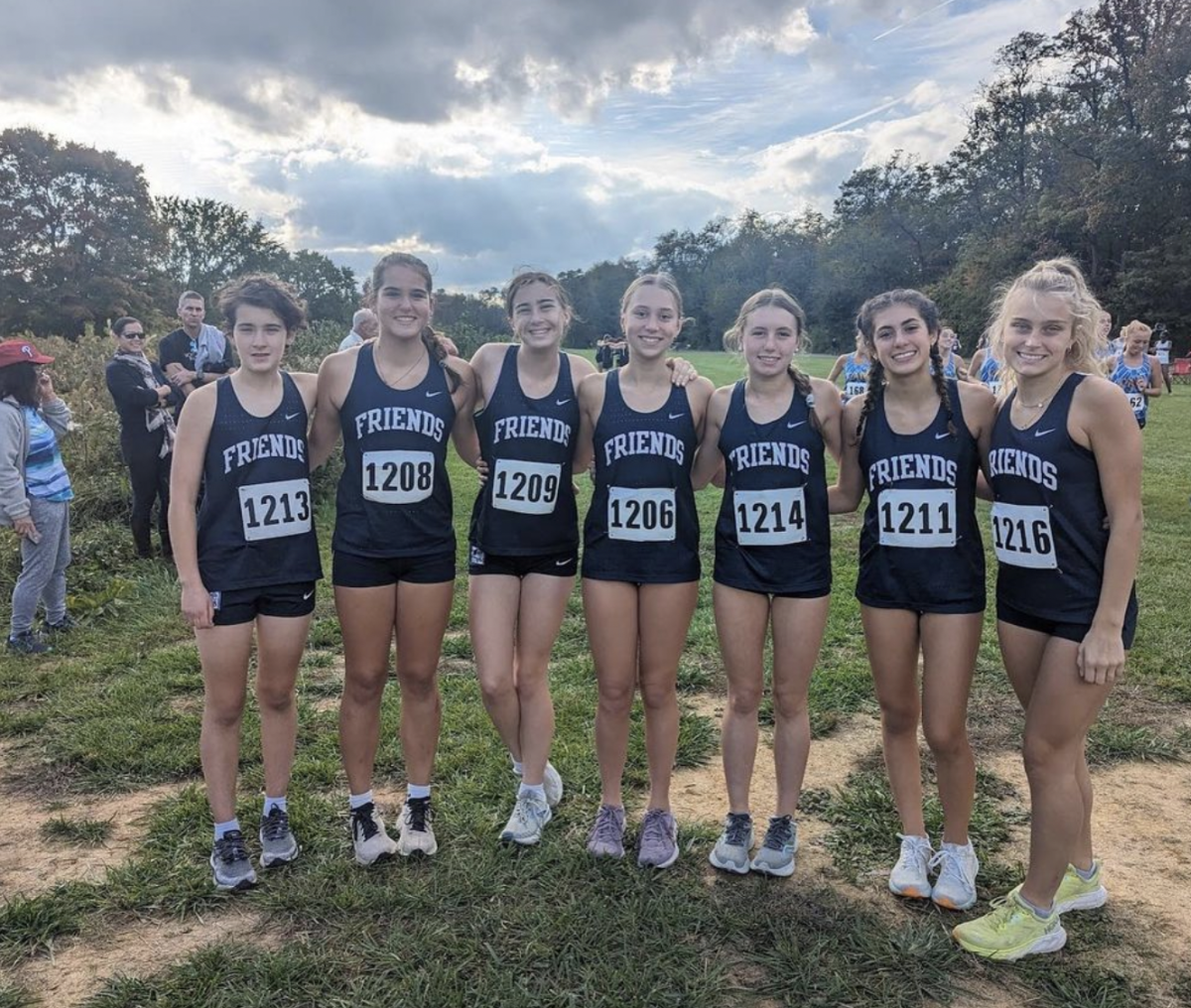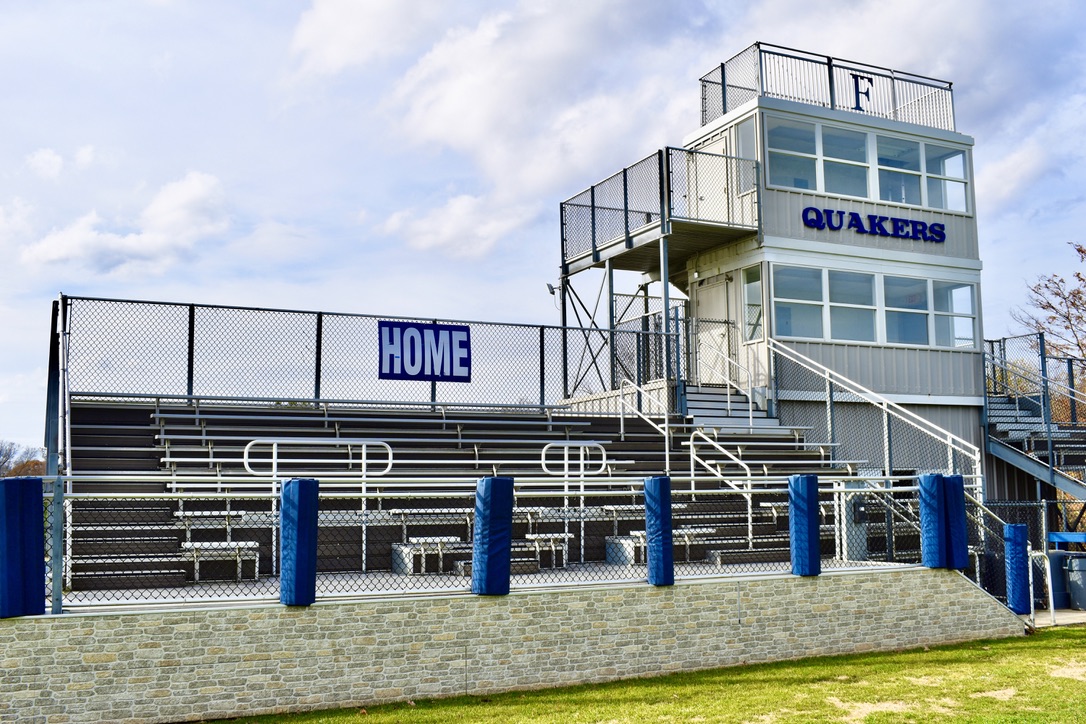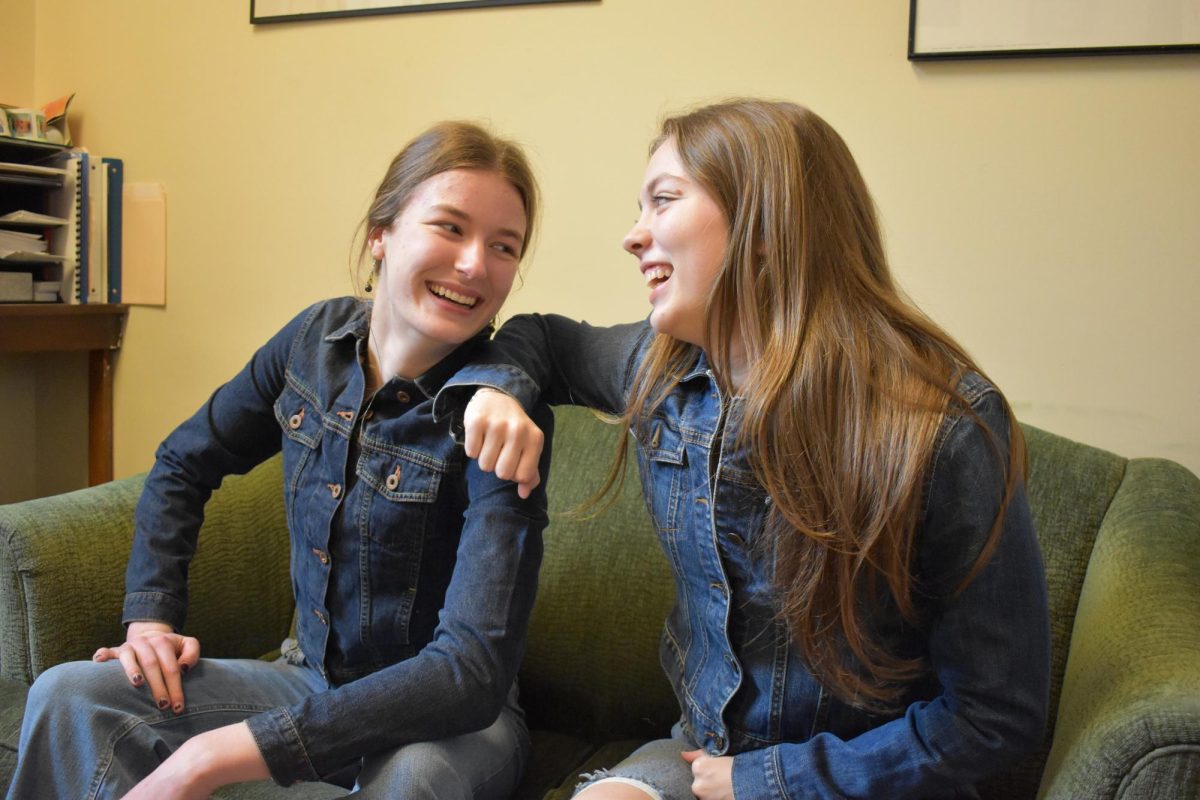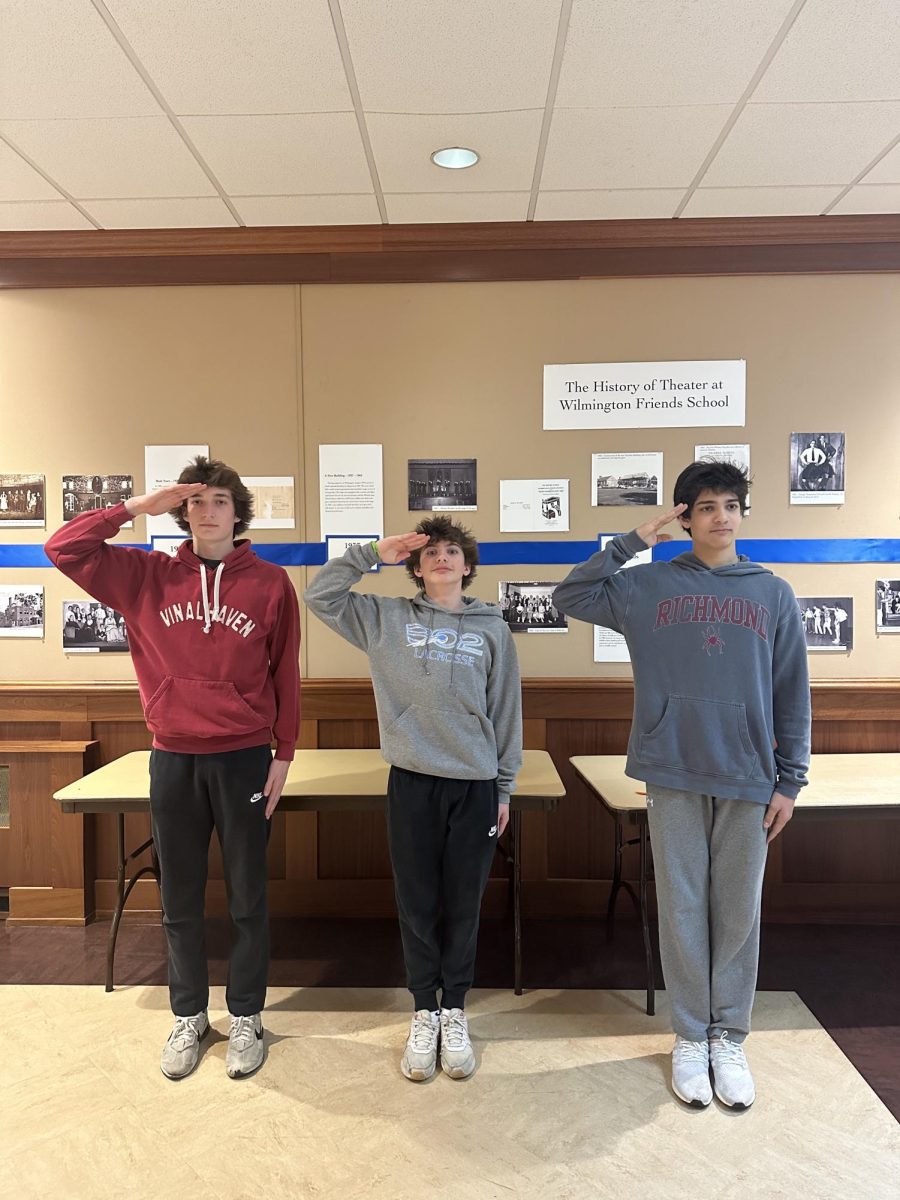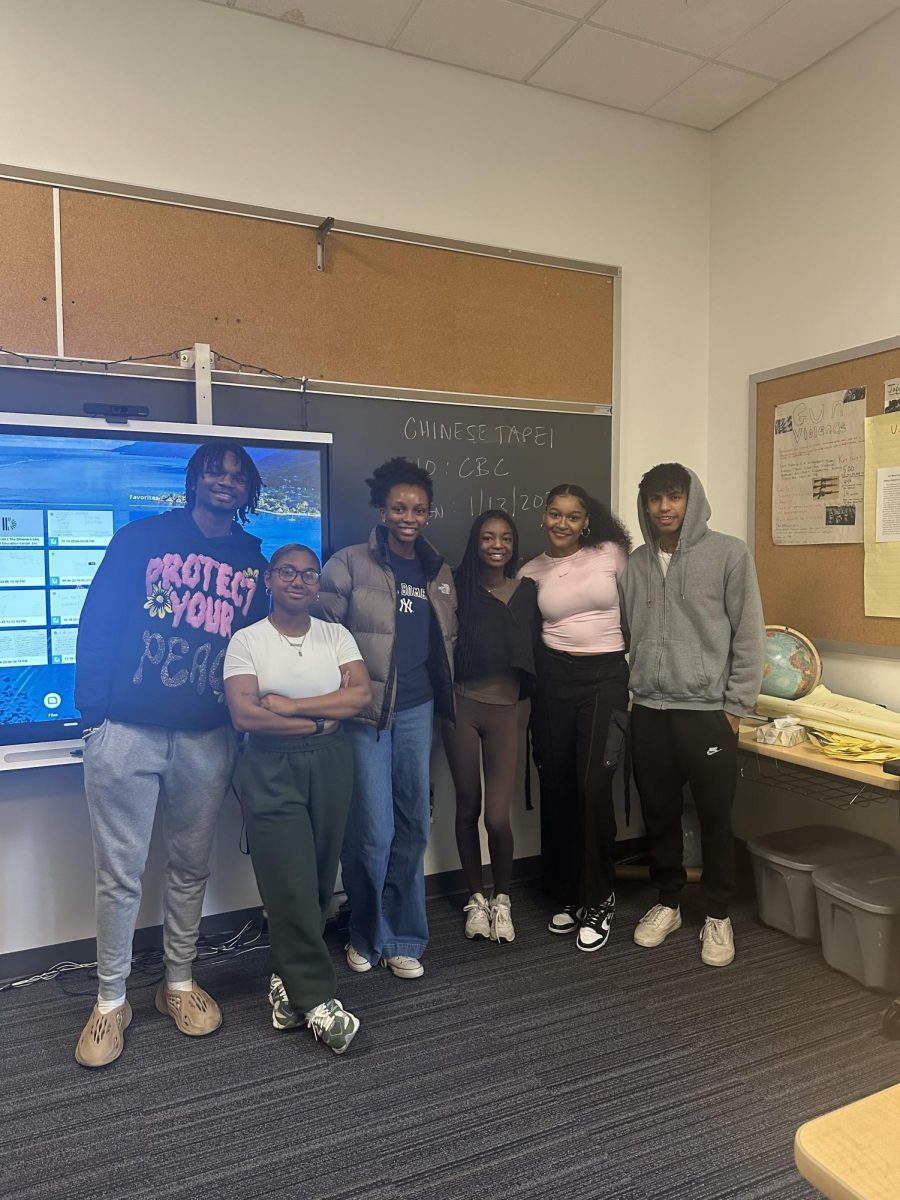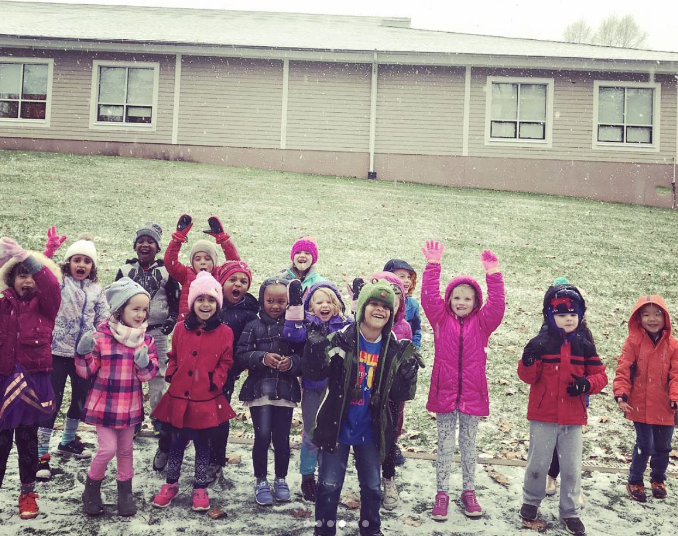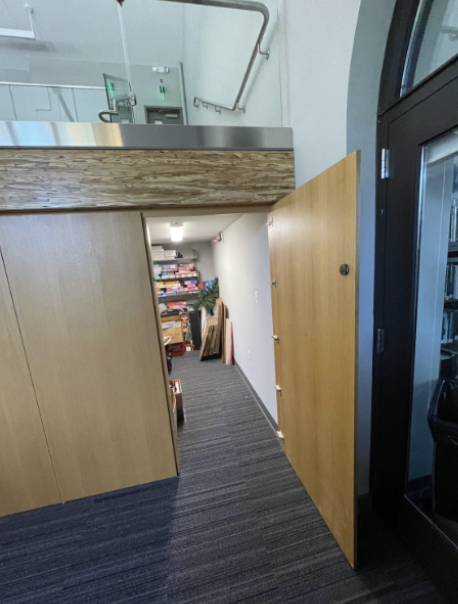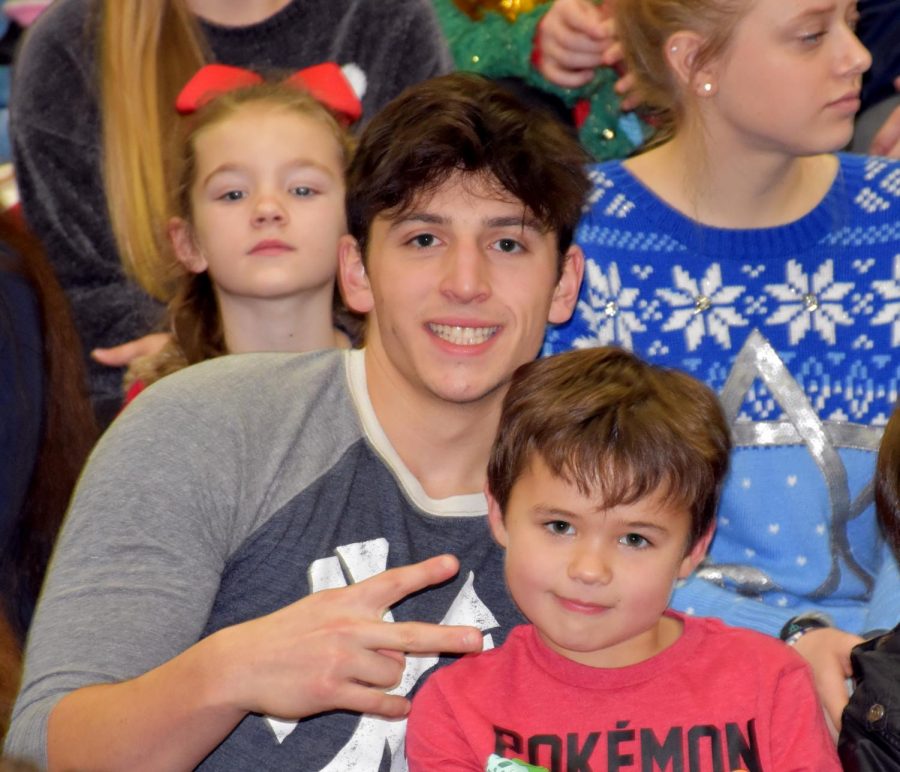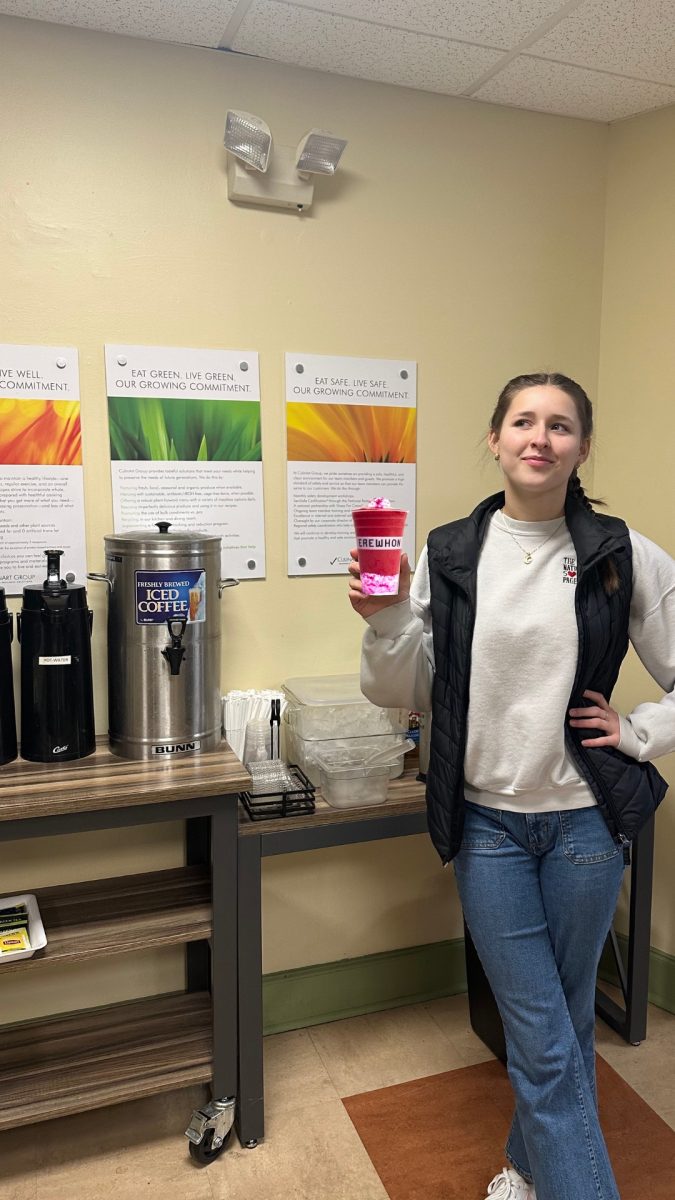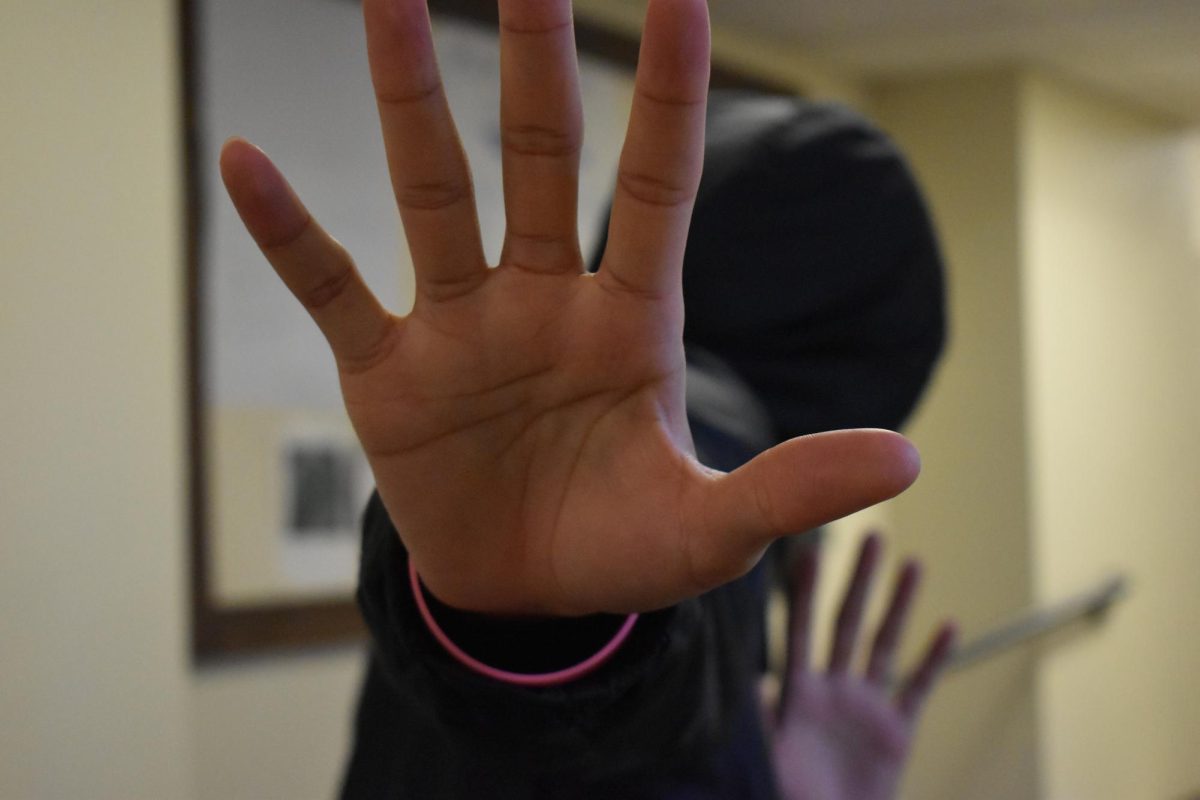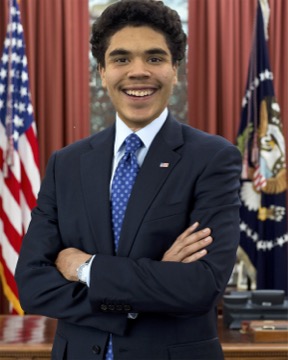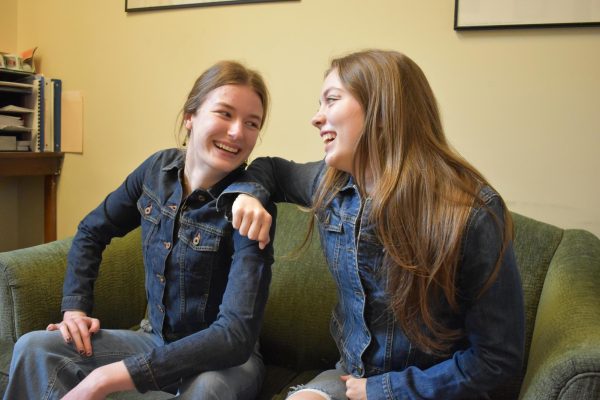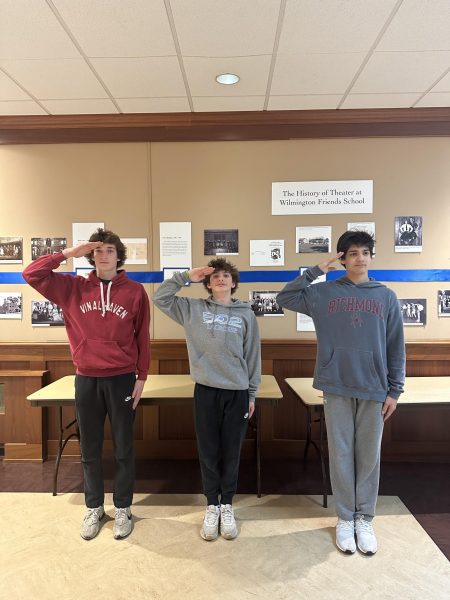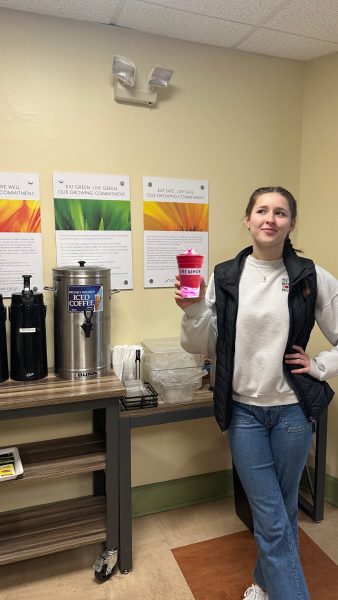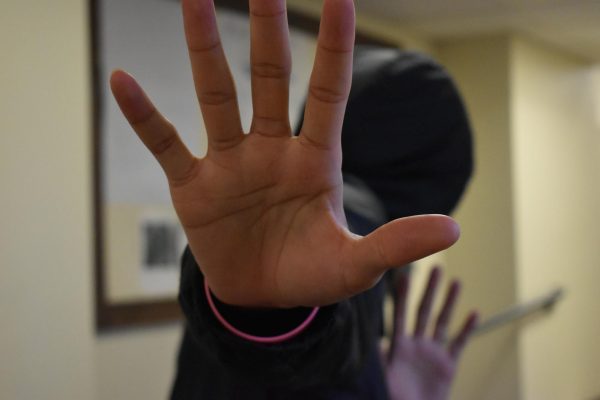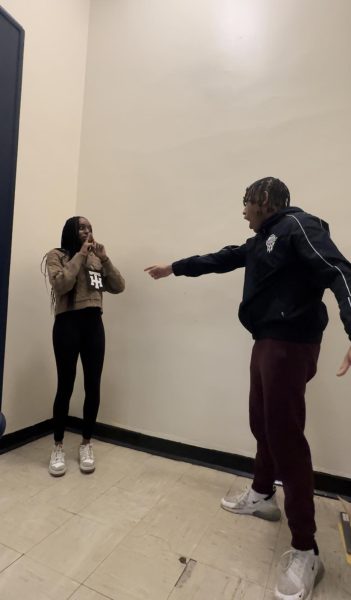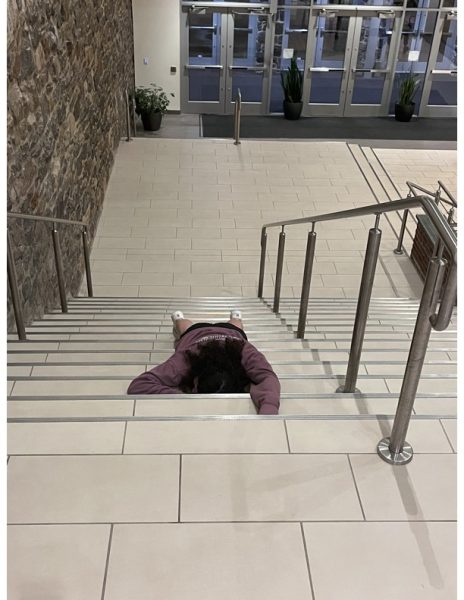Buddy Up! The Buddy System at Friends
March 30, 2020
The kids parade around the circle twice, dressed in their best Halloween costumes, cheered by throngs of parents. Seniors walk hand-in-hand with first-graders, kids a third their age. The Halloween parade is by far the most prominent display of the lower school buddy system, a program designed and implemented in the late eighties or early nineties. The system connects kids of different ages in the lower school, allowing for the formation of deeper relationships and strengthening the unity of the division. Upper school students play a significant part as well, as seniors and first graders pair up as buddies to bring the system full circle.
The lower school buddy system is a system in which each lower school student is paired with a younger or older student (depending on how old or young they are). Fifth graders are paired with kindergarteners, fourth graders with first graders, third graders with pre-k-ers, and second graders with preschoolers. In some cases, as with this year’s third grade, a class is much larger than another, so buddies can be put in groups with a ratio of two or even three students from one grade paired with one from another grade. Teachers also attempt to match students with similar personalities together. “They try to pair students according to their common interests as best they can,” Julie Rodowski, the Head of Lower School, said. Throughout the year, they meet to learn about each other and develop a meaningful friendship. Bonding activities include drop-everything-and-read days (during which, at certain points, teachers stop their usual schedule and everybody reads a book) having lunch together, and notably, meeting for worship.
First graders are the exception, with each child having three buddies; one in fourth grade, one in twelfth, and one elder buddy, a senior citizen from the community. The latter pairing, known as the ElderandChild, was started in twenty-one years ago by then-first-grade-teacher Hope Hawkins, who was “interested in an intergenerational experience for her students,” Peter Wennigman, former head of lower school, said. “Wonderful relationships develop between each student and elder partner.” Students and elders sometimes attend art and music classes together, and elder buddies often come to their younger buddy’s spring concert in a celebration of their special relationship.
In a larger sense, the system was implemented approximately thirty years ago as a means of providing a chance for lower school students to build relationships with others beyond their own grades. Little evidence survives of the program’s earliest days, but “It seems like the oldest and youngest grades in the building were paired together,” Assistant head of lower school Chris Loeffler said. One major change came in the two-thousands when the younger students (Pre-K) were added to the program to further increase the interconnectivity of the lower school, according to Teal Rickerman, the lower school art teacher. “An area we’ve seen the buddy system expand is in the way buddies team up around curricular activities,” Rickerman said. “These include reading together or serving as audience members for concerts or other performances.” The system has evolved since its first conception, becoming much more intentional and institutionalized as a core principle of the lower school. “It’s pretty much a given that buddies will be seeing each other pretty regularly,” Rodowski said. “This helps build connections that last.”
Upper School students have an impact on the program as well. During large school gatherings, like the holiday celebration in December, older students often sit side-by-side with younger students, affording them an opportunity to chat with their smaller counterparts and to form friendships that would otherwise not exist. Informal relationships complement the much more prominent pairing of twelfth-graders with first-graders, a connection which officially bridges the two divisions. For those students who began their journey at friends in the lower school, the opportunity also constitutes bringing their experience full circle, from beginning to end. “My buddy and I established a friendship,” senior Annabel Teague said. “I really like seeing him and getting to talk to him.” Seniors and their first-grade buddies meet multiple times a year to read books together and learn from each other. “I think the system is great as it mixes kids up and pushes them outside their comfort zone,” Teague said. Other students who’ve experienced the program remember it fondly. “Typically it was during lunch, and I’d bring a sticker book to share with my buddy,” sophomore Carson Dunn said. “It was a really fun time.”
One criticism of the system is the fact that it is confined to younger students in the lower school. Of course, the fact that older students have a greater workload and an increased number of responsibilities mean that it might be very difficult to expand the program in the middle and upper schools. However, a major factor that could affect the future of the program is the plan to consolidate the campuses. If followed through, a combined campus would mean more convenient interaction between the grades and divisions, which might lead to an expansion of the buddy system, perhaps even to include the middle school and the ninth, tenth, and eleventh grades. Such a shift would lead to more cohesion throughout the school, and, potentially, an improved school culture. The vibrancy and joy of the younger students could perfectly complement the often-stressed environment of the upper and middle schools. “Proximity to older students expands the possibility of new connections and new learning across grade levels,” Rodowski said.
Regardless of all its successes and its minimal drawbacks, the lower school buddy system represents something more than just a pairing of two similarly-minded students: It’s a tangible embodiment of one of the core Quaker principles of the school. The community interacts with and affects all the divisions, regardless of the physical barriers that separate them. Especially in times of insecurity and hardship, it’s the best we can do.

